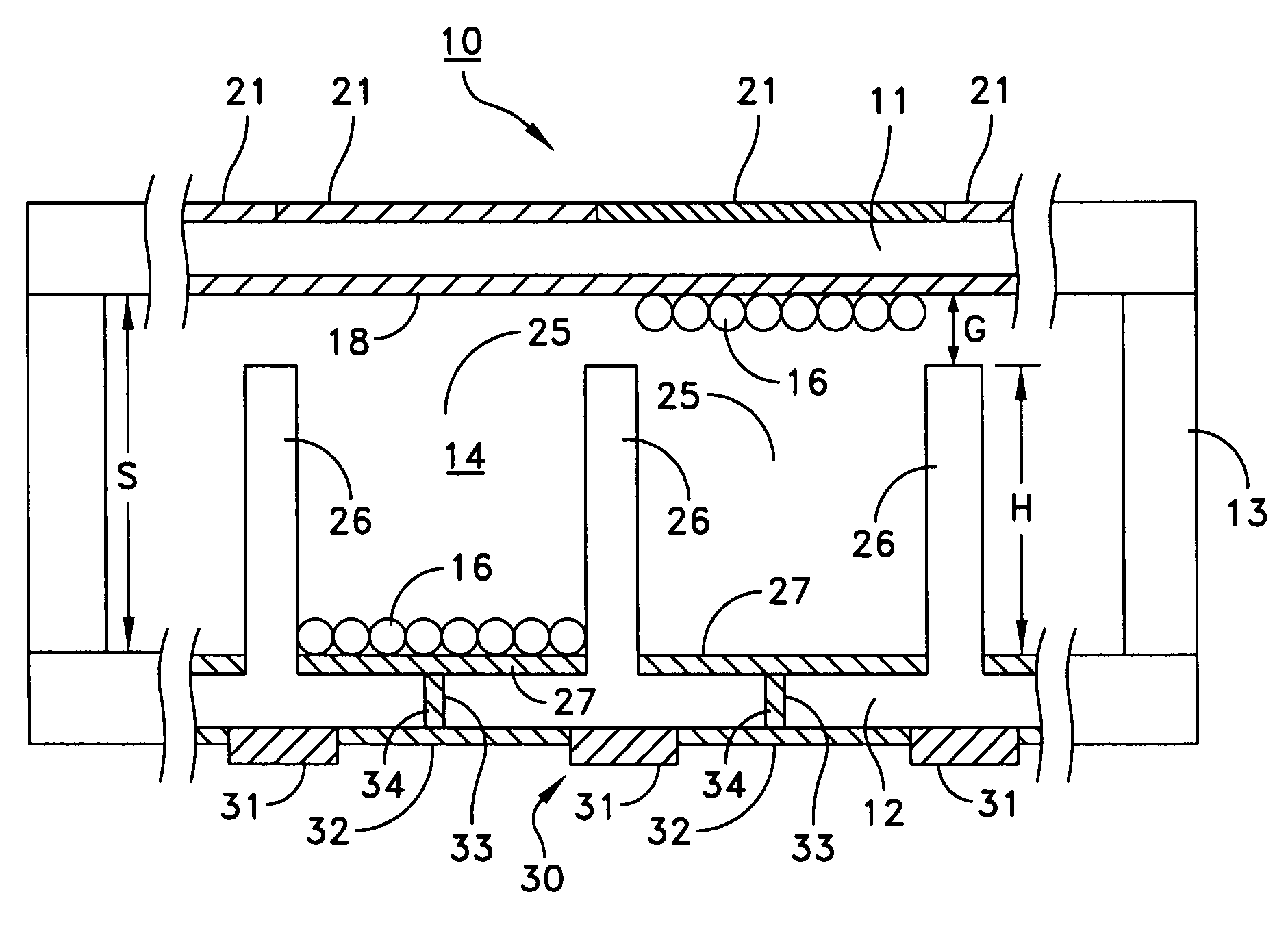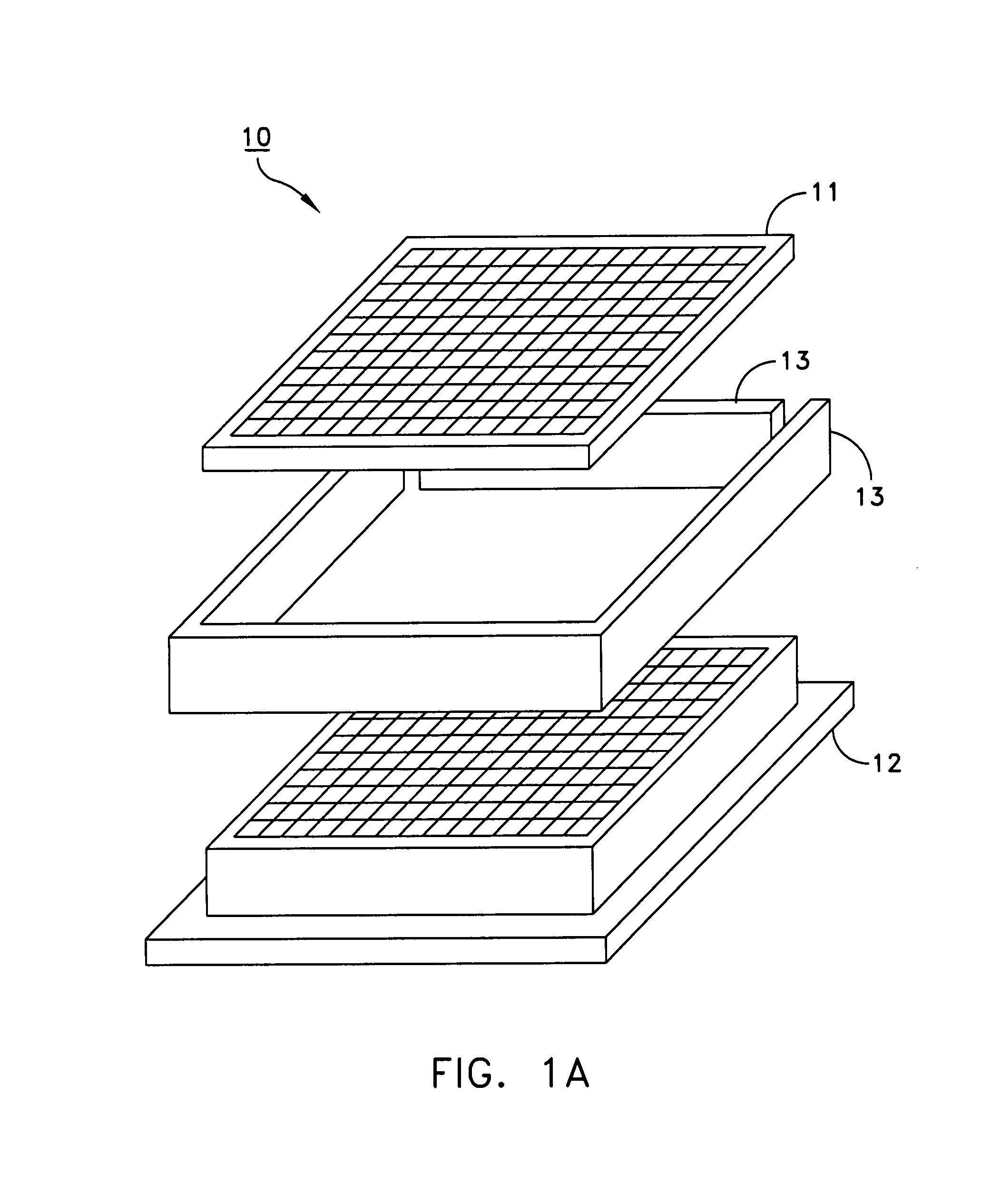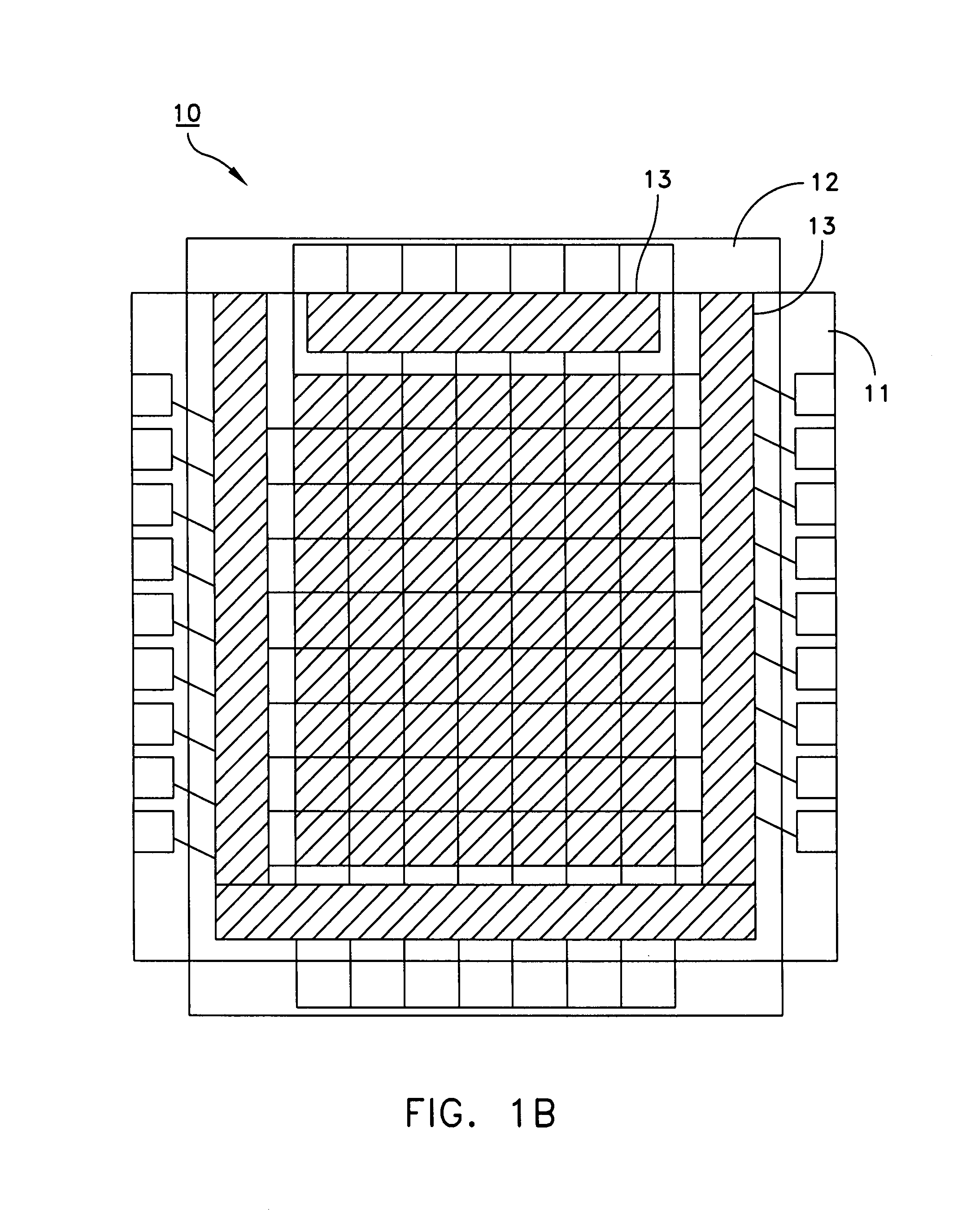Multi-color electrophoretic image display
a multi-color electrophoretic and image technology, applied in the field of multi-color electrophoretic image display, can solve the problems of limiting the number of applications where epids can be employed, and the art electrophoretic display
- Summary
- Abstract
- Description
- Claims
- Application Information
AI Technical Summary
Benefits of technology
Problems solved by technology
Method used
Image
Examples
first embodiment
[0031]FIGS. 1A and 1B collectively show a multi-color electrophoretic image display (EPID) 10 according to the invention. The EPID 10 comprises a pair of parallel electrodes 11, 12 sealingly assembled together with spacers 13 to form a liquid and gas sealed enclosure having a small space S between the electrodes 11, 12 (FIG. 4), and an electrophoretic fluid 14 filling the space S between the electrodes. The electrophoretic fluid 14 is conventional, comprising a dielectric liquid of a dark color, such as a blue or red, having suspended therein millions of polymer / pigment composite dielectric particles 16 (electrophoretic particles 16) of a light color, such as white or yellow, which can be charged in accordance with known techniques. The EPID 10 is typically rectangular in shape, although other geometrical configurations can be employed as well.
[0032]Electrode 11, referred to hereinafter as anode 11, is constructed from a generally planar sheet of transparent plastic or glass. As sho...
third embodiment
[0041]FIGS. 7A-7C collectively illustrate the EPID 70 according to the invention. In this embodiment, the cathode 12 essentially omits the cell side walls which project from the inner surface 23 thereof in the previous embodiments. This allows the drive circuit 30, TO which includes the electrically conductive metal lines 32 that electrically interconnect the diodes or transistors 31 disposed between the pixels, to be formed on the inner surface 23 of the cathode 12 along with the electrode pads 27 so that the electrically conductive through-holes used in the previous embodiments can be eliminated. Electrically conductive contact pads 71, which connect the drive diodes or transistors 31 to a driver chip, are also formed on the inner surface 23 of the cathode 12 adjacent opposing edges of the cathode 12.
fourth embodiment
[0042]FIGS. 8A-8C collectively illustrate an EPID 60 according to the invention. In this embodiment, the EPID 60 is constructed by combining three individual EPIDs 61, 62, 63 together in a face-to-face manner. The front, middle, and rear EPIDs 61, 62, 63 can be constructed essentially as described above in the previous embodiments, but without the filter arrays. Each EPID 61, 62, 63 contains electrophoretic particles preferably of one of the primary colors red, blue, and green. For example, EPID 61 can contain red particles, EPID 62 can contain blue particles, and EPID 63 can contain green particles. Thus, the front EPID 61 displays only red light, the middle EPID 62 displays only blue light, and the rear EPID 63 displays only green light.
[0043]Further, the cells or pixels 64, 65, 66 of the EPIDs 61, 62, 63 are oriented so that the light produced by the cells or pixels 65, 66 of the middle and rear EPIDs 62, 63 can be view through the front EPID 61. This can be accomplished, as show...
PUM
| Property | Measurement | Unit |
|---|---|---|
| thickness | aaaaa | aaaaa |
| thickness | aaaaa | aaaaa |
| colors | aaaaa | aaaaa |
Abstract
Description
Claims
Application Information
 Login to View More
Login to View More - R&D
- Intellectual Property
- Life Sciences
- Materials
- Tech Scout
- Unparalleled Data Quality
- Higher Quality Content
- 60% Fewer Hallucinations
Browse by: Latest US Patents, China's latest patents, Technical Efficacy Thesaurus, Application Domain, Technology Topic, Popular Technical Reports.
© 2025 PatSnap. All rights reserved.Legal|Privacy policy|Modern Slavery Act Transparency Statement|Sitemap|About US| Contact US: help@patsnap.com



